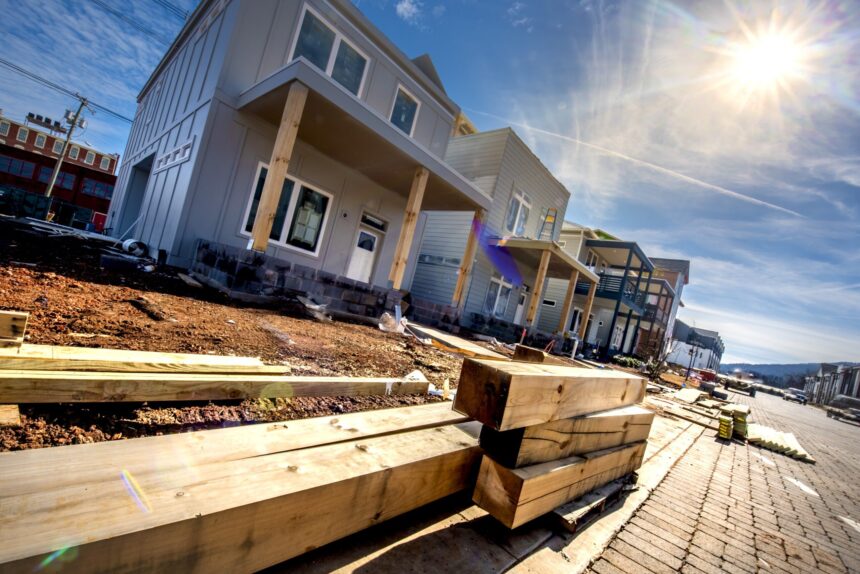Rural America is shrinking as residents leave for bigger metros in search of better opportunities.
Out of the top 10 counties nationally that have seen a decline in population, five are in Mississippi, according to new U.S. Census Bureau statistics.
“Rural areas have a hard time competing with larger cities that offer more job opportunities and higher wages to young residents and families,” says Hannah Jones, a senior economic research analyst at Realtor.com®.
In Yazoo County, MS, the population dropped by 6.4% between July 2023 and 2024. The county, once an agricultural hub in the Mississippi Delta, has lost residents due largely to domestic outmigration.
Similarly, the neighboring Sunflower County—which was once a thriving center of the Delta’s cotton industry—has seen its population shrink by 10.8% since 2020.
“A lot of people have moved out because there just isn’t much happening here—no real job opportunities or economic growth,” says Reginald Wells, a local real estate agent with The Agency Haus LLC. “Most homes are being rented rather than sold. People inherit homes or move away and end up renting them out because they don’t want to come back to live here.”
Similar patterns are emerging across Georgia, Alabama, and Oregon, where smaller counties with a resident population of 20,000 or more are struggling to hold on to their people.
In Mitchell County, Georgia saw a notable drop of 2.2% in its population, despite its relatively affordable median home value hovering around $248,425.
Nationally, about 37% of adults said their household found it somewhat or very difficult to cover typical expenses. Also, Mississippi (49.5%) and Alabama (45.5%) have the highest percentage of adults reporting difficulty affording basic needs, according to the U.S. Census Bureau’s Household Pulse Survey.
Additionally, counties like Yazoo and Sunflower had unemployment rates as high as 5.6% by the end of 2024.
Homebuyers from these areas are now looking to nearby counties like Madison, where companies such as Amazon Web Services are expanding operations. Madison’s growing data center campus stands in stark contrast to the economic struggles facing its rural neighbors.
“All of the counties with the steepest population losses are geographically close and share similar economic challenges,” Jones adds. “People are increasingly searching for homes in urban hubs like Jackson, MS, Memphis, TN, and Mobile, AL.”
Immigration, however, is helping to slow the decline in some areas. Without immigration, 452 U.S. counties would have lost population in the past year, according to the Population Reference Bureau. In 822 counties, immigration softened the rate of decline.
Impact on housing markets
Demographic shifts have a direct impact on local housing markets. In places like Yazoo and Sunflower counties, lower demand is leading to falling property values. Meanwhile, high-growth urban regions are experiencing soaring prices.
These demographic shifts are shaping local housing markets. For instance, Yahoo has a median list price of $171,156 and homes spend about 124 days on the market. In Sunflower, the median list price is $165,000 and homes spend 93 days on the market.
In contrast, counties that have seen a higher rate of residents move in are seeing the opposite trend—with higher median list prices and homes spending less time on the market.
Dawson County, GA, and Kaufman County, TX, are among the fastest-growing counties in the country, according to census data. Both those counties are seeing home prices grow, and quicker sales, with the median list prices at $605,794 and $352,500 respectively.
Homes in rural counties with dwindling populations might seem more affordable, according to the National Association of Realtors®. However, long-term investment remains uncertain unless there are targeted efforts to revitalize the economy.
Broadband access and infrastructure investments could help. The USDA identifies reliable internet as a key driver of remote work and new business creation.
“Places seeking to stabilize population loss through local development efforts are directing attention to these issues as ones that have a more direct impact on influencing in the ever-changing, global context. For rural communities, this necessitates multicommunity and regional collaboration,” says John J Green, professor and director of the Southern Rural Development Center.











